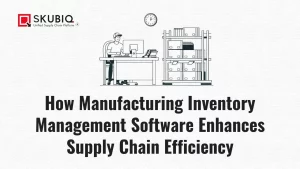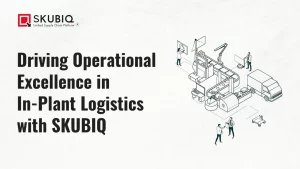In today’s fast-paced business environment, Just-in-Time (JIT) Inventory Management has become a cornerstone for companies striving to enhance efficiency and reduce waste. This guide delves into the intricacies of JIT inventory management, offering a comprehensive overview of its techniques, benefits, and implementation strategies.
Understanding Just-in-Time Inventory Management
Just-in-Time (JIT) inventory management is a strategy aimed at improving a business’s return on investment by reducing in-process inventory and associated carrying costs. The primary goal of JIT is to align production schedules with customer demands, ensuring that materials and products are available precisely when needed and in the exact quantities required.
Core Principles of JIT
- Demand-Driven Production: JIT relies heavily on actual customer demand rather than forecasts. This approach minimizes the risk of overproduction and excessive inventory.
- Continuous Improvement (Kaizen): A key element of JIT is the ongoing effort to improve processes, reduce waste, and enhance productivity.
- Flow Efficiency: Ensuring that each stage of the production process flows smoothly without delays or bottlenecks.
Key Techniques in Just-in-Time Inventory Management
Kanban System
Kanban is a scheduling system that helps manage production and inventory levels. It uses visual signals, such as cards or bins, to indicate when new stock should be ordered or production should be initiated. This method ensures that materials are replenished only when necessary, maintaining optimal inventory levels.
Benefits of Kanban:
- Reduced Waste: By aligning inventory levels with actual consumption, Kanban minimizes excess inventory and reduces waste.
- Enhanced Visibility: Visual signals provide immediate feedback on inventory status, improving decision-making and responsiveness.
- Flexibility: Kanban systems can be easily adjusted to accommodate changes in demand or production schedules.
Lean Manufacturing
Lean manufacturing is a holistic approach that seeks to eliminate waste and improve efficiency across all aspects of production. It encompasses several principles and practices, including:
- Value Stream Mapping: Identifying and analyzing the flow of materials and information to optimize the entire production process.
- 5S Methodology: Organizing the workplace to enhance efficiency and reduce waste. The 5S stands for Sort, Set in order, Shine, Standardize, and Sustain.
- Total Productive Maintenance (TPM): Ensuring that all equipment is maintained and operated in a way that prevents breakdowns and disruptions.
Just-in-Sequence (JIS)
Just-in-Sequence (JIS) takes the JIT approach a step further by ensuring that parts are not only delivered just in time but also in the correct sequence. This technique is particularly useful in complex assembly processes where the order of components is critical.
Advantages of JIS:
- Reduced Handling: Minimizes the need for re-sorting parts, saving time and reducing the potential for errors.
- Improved Efficiency: Streamlines the assembly process, leading to faster production times and lower costs.
- Enhanced Quality: By ensuring that components are used in the correct sequence, JIS helps maintain high-quality standards.
Benefits of Just-in-Time Inventory Management
Implementing JIT inventory management offers numerous advantages, including:
Reduced Inventory Costs
One of the most significant benefits of JIT is the reduction in inventory holding costs. By minimizing the amount of inventory on hand, businesses can reduce storage costs, insurance expenses, and the risk of obsolescence.
Improved Cash Flow
With less capital tied up in inventory, companies can improve their cash flow. This allows for better allocation of resources and investment in other areas of the business.
Enhanced Supplier Relationships
JIT requires close collaboration with suppliers to ensure timely delivery of materials. This fosters stronger relationships and can lead to better terms, improved quality, and more reliable supply chains.
Increased Efficiency and Productivity
By streamlining production processes and reducing waste, JIT enhances overall efficiency and productivity. This leads to faster turnaround times, higher output, and a more competitive edge in the market.
Higher Quality Products
Continuous improvement and a focus on eliminating waste result in higher quality products. With fewer defects and errors, businesses can meet customer expectations more effectively and build a stronger reputation.
Challenges and Considerations in Implementing JIT
While the benefits of JIT are substantial, implementing this strategy is not without challenges. Companies must carefully consider the following factors:
Supplier Reliability
JIT depends on reliable suppliers who can deliver materials on time and in the correct quantities. Any disruption in the supply chain can have significant repercussions on production schedules.
Demand Variability
Fluctuations in customer demand can pose a challenge for JIT systems. Businesses need robust forecasting and flexible production processes to adapt quickly to changes in demand.
Employee Training and Engagement
Successful JIT implementation requires a well-trained and engaged workforce. Employees must understand the principles of JIT and be committed to continuous improvement and waste reduction.
Technological Integration
Advanced technology and software systems are essential for managing JIT inventory. Companies need to invest in tools that provide real-time visibility into inventory levels, production schedules, and supply chain activities.
Steps to Implement Just-in-Time Inventory Management
Implementing JIT inventory management involves several critical steps:
1. Assess Current Processes
Evaluate existing inventory and production processes to identify areas of waste and inefficiency. Conduct value stream mapping to gain a comprehensive understanding of the current state.
2. Engage Stakeholders
Involve key stakeholders, including suppliers, employees, and management, in the planning and implementation process. Effective communication and collaboration are essential for success.
3. Develop a Plan
Create a detailed implementation plan that outlines goals, timelines, and responsibilities. Define key performance indicators (KPIs) to measure progress and success.
4. Train Employees
Provide comprehensive training to employees at all levels. Ensure they understand JIT principles and are equipped with the skills needed to support the new processes.
5. Implement Technology
Invest in technology solutions that support JIT, such as inventory management software, ERP systems, and real-time tracking tools. These systems will provide the data and insights needed to manage inventory effectively.
6. Monitor and Adjust
Continuously monitor the implementation process and make adjustments as needed. Use KPIs to track progress and identify areas for improvement. Encourage a culture of continuous improvement to sustain long-term success.
Conclusion
Just-in-Time Inventory Management is a powerful strategy for businesses looking to enhance efficiency, reduce costs, and improve product quality. By understanding the core principles, techniques, and benefits of JIT, companies can successfully implement this approach and achieve significant competitive advantages. The journey to JIT requires careful planning, collaboration, and a commitment to continuous improvement, but the rewards are well worth the effort.



